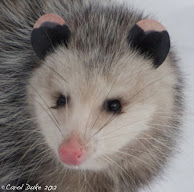Releasing Monarch butterflies is one of the greatest joys in the process of raising these beautiful fragile creatures.
My Monarch Butterfly Life Cycle: A Metamorphosis . . . continues with seeing the adult butterflies safely introduced into their environment and towards the first leg of their extraordinary
migration.
When last we met . . . the Monarchs had mandibles for munching, six true legs and five pairs of prolegs for getting around and were cleverly composing a chrysalis within their striped skin.
Then their exquisitely crafted chrysalises were revealed and hung by their cremaster for about two weeks
(with exception to two chrysalises that are still hanging on in green in a bouquet by the window after four weeks.)
It was a thrill to finally see the butterflies forming inside their clear casings.
Finally, observing the tiny winged butterflies emerge from their chrysalises and hanging on, while their wings are pumped up and dried . . . creates awe while stimulating the imagination and a keen sense of wonder at the marvels of nature.
Then the time comes to gently and very patiently hold out my fingers and hand bus for the butterflies to board and the releasing begins.
Now, with all new body parts functioning and familiar they turn their heads to and fro, while opening and closing bright wings, strengthening muscles and preparing for lift off to join many others of their kind on a journey completely unknown to them all.
Skies are not always cerulean blue and I always say a little extra prayer,
while whispering 'Good Luck', for those creatures that must fly out into a threatening canopy of sky.
Up and Away! What a thrill that first flight must be!
Butterflies are nearsighted but can discern many colors with their complex compound eyes.
They will discover many flowers along their way allowing them to recharge for their long and arduous flight to Mexico.
Another butterfly cuts into the sky . . . flying above the middle meadow garden.
Most days in September I wear butterflies.
Above, on a day with soft, fluffy, cotton clouds and blue skies,
I release four Monarch Butterflies out the Barn Studio doors into the North Garden.
You can see one Monarch butterfly flying away just below the last one still clinging to my finger.
Some days I walk out into the gardens . . .
sheltering the butterflies for awhile longer.
This magical process goes on most of July, August and September.
It is with a bit of sadness that I say goodbye to my last Monarch butterfly each year.
I spend about a month with each of them . . . discovering the tiny eggs on milkweed that grows freely in my fields and gardens . . . two weeks of carefully caring for the
capable caterpillars . . . two weeks of admiring their jewel like
chrysalises . . . then the final
emergence and a few hours of knowing the butterflies close up . . . it is being uniquely connected to a special process of life unfolding within our mysterious world of nature. I cherish this seasonal ritual.
Each summer for nearly thirty years I have raised Monarch butterflies and written about their metamorphosis extensively. These are not scientific writings but close up observations of the life cycle from an artist/naturalist and farmers perspective. You can scroll down to the bottom of this page to see a cloud of words that together cover topics about mostly my land, gardens and the wildlife that share it with me. By clicking on 'Monarch Butterfly Metamorphosis' you might learn . . . in reverse . . . more about the Monarch Butterfly's life cycle and its momentous migration.
Seeing the Monarch butterflies I have raised join other butterflies and bees in the garden is the topic of my next installment of this series.





























































































































































